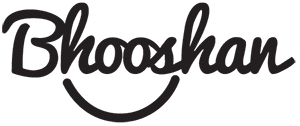I am involved in an engaging organizational innovation exercise with a team comprising business consultants and senior leadership of one of the top healthcare companies in Canada that own and operate over a 1000 pharmacy locations across the country. Apart from several themes one of the aims of this 3-month long exercise is to understand the barriers in the delivery of timely services to patients and finding an innovative solution to wait-times. So, what exactly is a ‘wait-time’ in the context of a pharmacy? In simple terms, it is typically that period in a given service parameter in which a pharmacy customer (patient or caregiver) has to wait before he/she is dispensed the prescribed medication and depending upon the traffic of a specific pharmacy location that period could sometimes run into hours. The current demographic of pharmacy patients consists largely of ‘baby boomers’ who were born in the 40s-60s but that won’t be the case forever because more millennials, the cohort of people generally born in the 80s-90s, have begun to emerge as an influential group not just for healthcare but the retail industry at large. This segment is most prominent for its early adoption of digital apps and automation but the ‘boomers’ aren’t laggards either with adopting a digital lifestyle. As we gather around in focusing on and exploring various options I wanted to present some of my views on tackling wait times (WT) in the incumbent age of digitization. Additionally, I also wanted to share some of my observation and learning on wait times with other brands, in particular, IKEA.
Basics of Wait Times

I would continue with my comprehension of WTs in the context of pharmacies. So, to begin with, what is a wait time and why is it important? In technical terms, a ‘wait-time’ is a crucial factor from the perspective of implementing the prioritization order in a customer queue to ensure that one person’s isolated need/demand does not gain precedence over the others waiting in the line. If managed efficiently on a consistent basis, WTs also play a major role in managing the working time of the pharmacy staff and also helps bring productivity and efficiency into the work culture, such as preparing the medication while the patient waits in anticipation. From a pharmacy standpoint, despite all the clear advantages, there are prevailing challenges which prevents pharmacists from meeting their stated goals. Some of those challenges include lack of team coordination and overlapping (or the lack of) of responsibilities. Then from unskilled staff to complicated digital systems and sometimes even the unavailability of medications at pharmacy locations can not only affect wait-times considerably but could also drastically lower a brand’s value over a period of time. On the other hand, it might be harder to realize but customer wait times are not just limited to pharmacies alone. In fact, in Canada, it’s common for patrons to wait for their turn while availing any form of service just that and experience levels of anxiety and anticipation. Services which have lower levels of expectation generally escape the customers’ ire from bad service experience, whereas others like IKEA have developed a robust & orderly mechanism for addressing wait time challenges using a combination of digitization and environmental factors (store). I have described my experience in IKEA in the post a little later.
Continue reading…
 I was moved to learn about the passing away of IKEA’s founder Ingvar Kamprad yesterday, aged 91. He was born in 1926 in Småland in southern Sweden and raised on ‘Elmtaryd’, a farm near the small village of Agunnaryd, that’s how the company also got its name IK (Ingvar Kamprad) E (Elmtaryd) A (Agunnaryd). Ingvar displayed an entrepreneurial spirit at a tender age and founded IKEA in 1943 when he was only 17, initially selling pens, wallets, picture frames, table runners, watches, jewellery and nylon stockings at reduced prices and eventually moving to retailing furniture in 1948. I once wrote about the design of a table from their catalogue which supported
I was moved to learn about the passing away of IKEA’s founder Ingvar Kamprad yesterday, aged 91. He was born in 1926 in Småland in southern Sweden and raised on ‘Elmtaryd’, a farm near the small village of Agunnaryd, that’s how the company also got its name IK (Ingvar Kamprad) E (Elmtaryd) A (Agunnaryd). Ingvar displayed an entrepreneurial spirit at a tender age and founded IKEA in 1943 when he was only 17, initially selling pens, wallets, picture frames, table runners, watches, jewellery and nylon stockings at reduced prices and eventually moving to retailing furniture in 1948. I once wrote about the design of a table from their catalogue which supported 